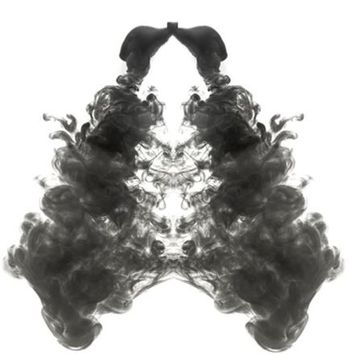
Ambulatory Oxygen Questioned for Daily Dyspnea in COPD
TORONTO -- Ambulatory oxygen, a big-ticket item for Medicare, may not be all it's cracked up to be for chronic obstructive pulmonary disease without resting hypoxemia.
TORONTO, Aug. 15 -- Ambulatory oxygen, a big-ticket item for Medicare, may not be all it's cracked up to be for chronic obstructive pulmonary disease without resting hypoxemia.
So found Roger S. Goldstein, M.B., Ch.B., of the University of Toronto, and colleagues, with 27 COPD patients, each acting as his or her own control, a series of double-blind N-of-1 randomized control trials.
Although ambulatory oxygen improved endurance and the number of steps taken in a walk test, few patients with COPD and no resting hypoxemia had improved dyspnea and quality of life scores, the investigators reported in the second August issue of the American Journal of Respiratory and Critical Care Medicine.
This study does not support the general application of extended ambulatory oxygen therapy for COPD patients who do not meet criteria for mortality reduction with long-term oxygen, they said.
In 2002, Medicare paid .2 billion for stationary home oxygen systems, the researchers said. Ambulatory systems costs more, and even the most cost-effective portable, lightweight cylinders and liquid systems require frequent maintenance and delivery.
The 27 COPD patients without resting hypoxemia, whose mean age was 69, did not meet the criteria for mortality reduction with long-term oxygen therapy. Participants came from a group of potentially eligible patients identified from 2003 through 2005.
In this trial design, participants served as their own controls, crossing over between two masked treatments several times.
The patients underwent three pairs of two-week blinded trials using either oxygen during one period of each pair and a placebo mixture (compressed air) during the other.
At the end of each trial, patients were assessed with the Chronic Respiratory Questionnaire (CRQ) for dyspnea and the St George's Respiratory Questionnaire and given a home five-minute walk test to assess exercise performance.
A positive response was defined as a CRQ dyspnea score greater (less dyspnea) on oxygen than placebo during all three pairs of treatment periods, with a difference ?0.5 inches for at least two treatment pairs.
Oxygen significantly increased the five-minute-walk test (427 versus 412 steps, P=0.04). Patients were instructed to use oxygen at 2 L a minute for at least one hour a day during activities that made them short of breath.
Conceivably, the researchers said, ambulatory oxygen would be more effective for those engaged in a higher level of activity, although the patients' level of physical activity was not clear.
In the entire group, neither the dyspnea score nor the St. George's Respiratory Questionnaire showed any statistical or clinical differences between oxygen and placebo, Dr. Goldstein and colleagues said.
Only two patients met the responder criteria, meaning that in all three pairs, the CRQ dyspnea scores were greater than placebo scores, and for two of the three pairs this difference was 0.5 or greater.
One patient, identified as a clear responder, whose overall scores and walk tests improved markedly on oxygen, requested early termination of the placebo phase of the trial during all three periods. It is possible, the researchers said, that ambulatory oxygen may be more effective for those engaged in a higher level of activity.
However, for these two patients this response was not reflected in any of the quality of life scores, the researchers said.
Finally, the researchers reported, no patient responded to placebo over oxygen.
A potential limitation of this trial was its sample size, the researchers noted. However, the analysis suggested that it would be extremely unlikely that enrolling more patients would have altered the conclusion.
One approach would be to restrict oxygen use to patients who show benefit from an N-of-1 cross-over trial, the researchers suggested, noting that although the costs of such trials are not negligible, they are "considerably less than the cost of providing long-term ambulatory oxygen for patients who do not benefit from it."
In an accompanying editorial, M. Bradley Drummond, M.D., and Robert A. Wise, M.D., of Johns Hopkins, praised the novel design of the study, but added that the broad clinical application of this complex study design might be difficult.
Implicit in the study authors' conclusion, they said, is the assumption that patients were in fact mobile and active during the study period. After all, they wrote, an intervention designed to improve dyspnea will have no effect if the patient is not involved in activities that induce dyspnea.
They noted that "in this study, the total time per day participants used the portable cylinder was 0.7 0.6 hours in the oxygen group and 0.6 0.6 hours with placebo cylinders. Essentially, patients used portable oxygen approximately 40 minutes per day, raising question as to their level of dyspnea-inducing activities."
Other studies have found that patients with COPD acclimate to an inactive lifestyle. This observation, they said, highlights a critical clinical distinction between functional capacity (what a patient is able to do) and functional status (what a patient actually does).
The study, they wrote, "challenges us to learn what supplemental oxygen therapy can accomplish when coupled with an exercise training program designed to potentiate oxygen's effects."
Newsletter
Enhance your clinical practice with the Patient Care newsletter, offering the latest evidence-based guidelines, diagnostic insights, and treatment strategies for primary care physicians.



























































































































































































































































































































